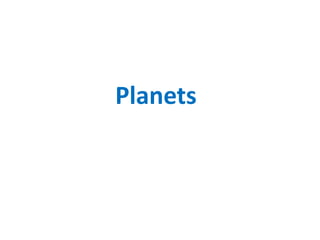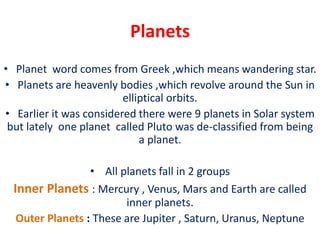The document discusses the key characteristics of planets in our solar system. It describes how planets are classified into inner and outer planets, with Mercury, Venus, Earth and Mars as the inner planets and Jupiter, Saturn, Uranus and Neptune as the outer planets. An asteroid belt exists between the inner and outer planets. Details are then provided about the inner planets Mercury, Venus and Earth, describing their sizes, distances from the Sun, compositions and other notable features.













